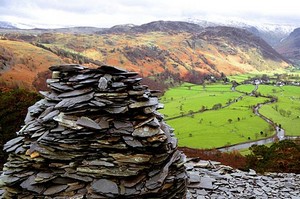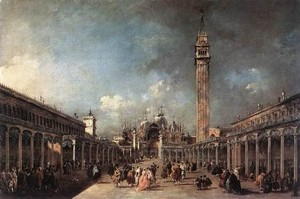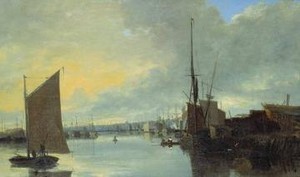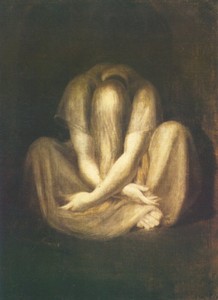Proposal for a paper to be given on a panel on for a South Central Society for Eighteenth Century Studies at the Grove Inn Park, Asheville, North Carolina, February 23-25, 2012

My paper will address a problem that has bedeviled Ann Radcliffe criticism from earliest writing about her work: she obsessively fills her fictions, every nook and cranny, with landscapes that seemingly have no content that lends itself to precise social, psychological, or accurate topographical or historical analysis. With the exception of her travel writing, A Journey Made in the Summer of 1794, and two sets of English journals, she consistently describes what she never herself saw or experienced, whose literary and visual sources are hard to prove except by weak proof of general analogies with numerous other visual works.2 The seeing eye and variously shattered, terrified, depressed, or alternatively, lyrically joyous, relieved, and nostalgic presence so tremblingly aware of exquisite details and alert to the configurations of vast landscapes seems itself frustratingly empty of anything that could permit us to reach the autobiographical or fictional narrative source experience of its felt depths.3 What's complained of is that that the trauma is not sufficiently attached to events in the heroine's life and psyche that are particularized. The repetition and occasional reductive (apparently trivializing) explanation make our reading experience non-serious, inapplicable to anything that matters, and are easily ridiculed; yet these have been beloved by generations of readers, while their nonetheless undoubted wide influence and power, which was so strong immediately (as in Scott) is testified to again and again by intelligent readers even if so hard to pin down (and at a distance unacknowledged).
I intend to attempt a solution by bringing into the conversation recent Italian work which seems not sufficiently well-known for its theses to be integrated into recent Radcliffe studies: mainly, Beatrice Battaglia's Landscapes and Mysteries: Rediscovering Ann Radcliffe, Battaglia's work on the Victorian gothic ghost tales of Margaret Oliphant (who herself studied Radcliffe's landscapes and writes with real understanding of them), and essays published in the journal La Questione Romantica.4 I'll bring together these and other recent criticism of Radcliffe's non-fictional travel writings to show that the content of the fictional landscapes is that of a dystopia critical of gender and political arrangements of the era (Radcliffe is strongly anti-war and, perhaps unexpectedly to some, pro-Revolution in principle) which comes out of Radcliffe's understanding of how she dealt with her experiences of cycles of trauma and recovery. I want to extend Battaglia's thesies as well as argue for Radcliffe's strongly explicitly liberal (or Whiggish, Girondin-like) like positions clearly articulated in her lesser known Journey. Radcliffe's fantastical and life-writing have for too long been treated separately: I will show how the one can explain and bring out the content lurking beneath the surface of the other.
Ellen Moody
George Mason University

Notes
1 Austen, Jane. The Novels of Jane Austen. Ed. R. W. Chapman. 3rd ed. Oxford: OUP, 1933-69. P&P 154.
2 These works are for the first time beginning to be highly valued and discussed, e.g., Dorothy McMillan, “The secrets of Ann Radcliffe's English travels,” Romantic geographies: Discourses of travel, 1775-1844, ed. Amanda Gilroy. Manchester: Manchester U P. 51-76 (she rates the life-writing and journals higher than the fiction); Jeanne Mostal, “Ann Radcliffe's Lake District,” Wordsworth Circle, 31 (2000):56-62.
3 Scott who rightly rated Radcliffe so highly has to tell readers that we must not go to Radcliffe for realistic portraits of human nature such as our found usually in masterly novel, Walter Scott, “Ann Radcliffe,” On Novelists and Fiction, ed. Ioan Williams (New York: Barnes & Noble):110-11.
4 Especially, “Viaggio e Paesaggio,” La questione romantica, 15-16 (Autunno 2003 – Primavera 2004).

Works Cited
- Battaglia, Beatrice. “La scrittura fantastica contro I misfatti della ragione” and “L'allegorica dell'individualismo borhese in 'The Land of Darkness” di Margaret Oliphant,” La Critica alla Cultura Occidentale nella Letteratura Distopica Inglese. Ravenna: Longo, 2006. 9-14, 31-40.
- ----------------------. Paesaggi e misteri: Riscoprire Ann Radcliffe. Napoli: Liguori, 2008.
- Oliphant, Margaret. The Literary History of England in the End of the Eighteenth and Beginning of the Nineteenth Century, 3 vols. London: Macmillan, 1889. II:232-39.
- Radcliffe, Ann, A Journey Made in the Summer of 1794, through Holland and the Western Frontier of Germany, with a Return down the Rhine, To which are added Observations during a Tour to the Lakes of Lancashire, Westmoreland, and Cumberland. Elibron Facsimiles, 1975.
- Talfourd, Thomas Noon, “Memoir of the life and Writings of Mrs Radcliffe,” preface to Ann Radcliffe, Gaston de Blondeville, 2 vols. 1826; rpt. New York: Arno Pr, 1972. Includes chunks of Radcliffe's hitherto unprinted journals of trips through the UK.

Home
Contact Ellen Moody.
Pagemaster: Jim Moody.
Page Last Updated 9 September 2011